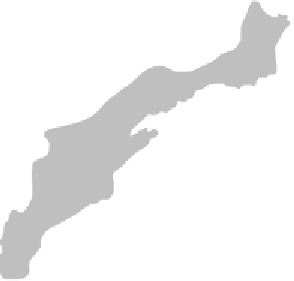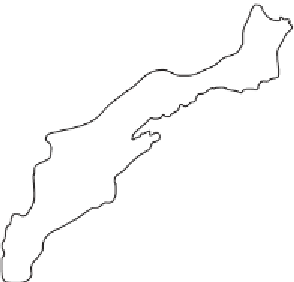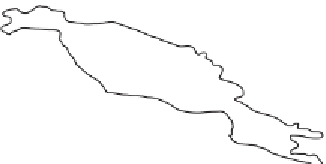Geoscience Reference
In-Depth Information
Figure 22.9. Australia and New Guinea during the LGM. (After Williams,
2001a
,
fig. 1.3A.)
22.7 Pleistocene extinctions of the Australian megafauna
The late Quaternary Lake Eyre Basin environmental record has also been at the heart
of still unresolved debates over the role of prehistoric humans on faunal extinctions,
on vegetation cover and on the strength of the summer monsoon. The disappearance of
the megafauna some 50,000 years ago, including the giant flightless bird
Genyornis
,
which, as noted in the previous section, was somewhat similar to the modern emu,
coincides very broadly with what is presently known to be the first appearance of
prehistoric humans in Australia (Roberts et al.,
1994
; Roberts et al.,
2001
;Bowler
et al.,
2003
;Vethetal.,
2009
). Three main hypotheses have been proposed to account
for the demise of the Australian megafauna: climatic change, 'overkill' as a result of
hunting and modification of habitat by burning.


























































































































































































